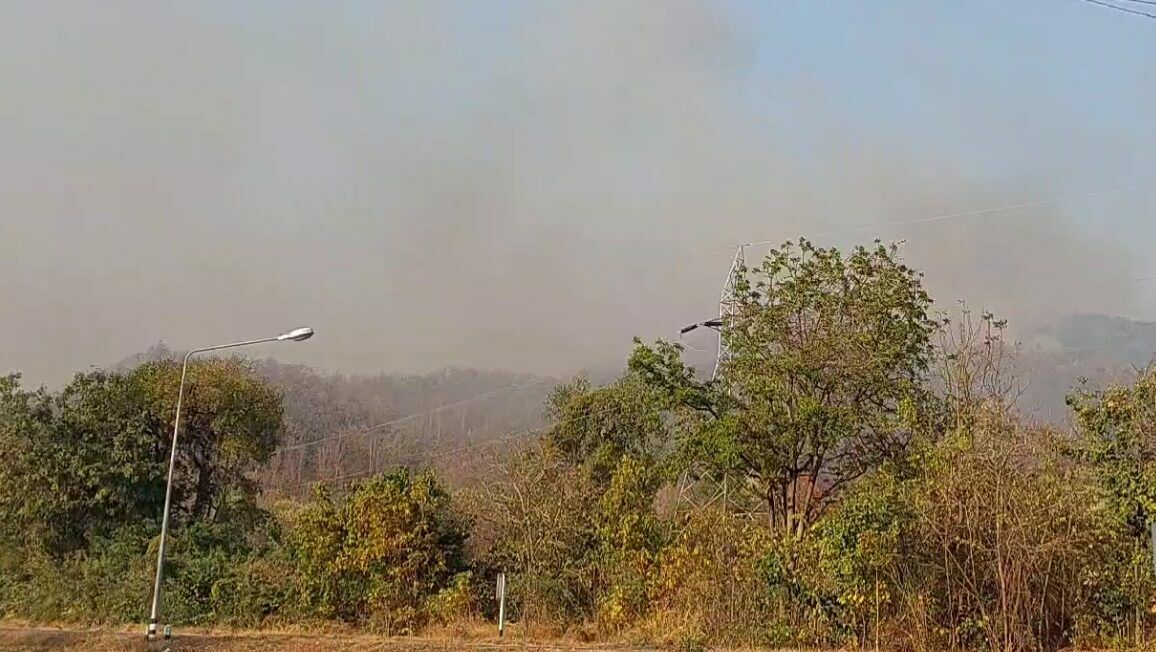Wildfires in Tak worsen air quality, efforts to contain blaze continue

Wildfires have engulfed Doi Nam Dip in Tak province for three consecutive days and nights, showing no signs of abating. The fires have exacerbated air pollution in the area, with PM2.5 levels blanketing the province. Officials are intensifying efforts to extinguish the blaze.
The wildfires raging in Tak have intensified, causing hazardous smoke to cover the entire province. Today, February 4, the air quality monitoring station in Mae Pa, Mae Sot district, reported a PM2.5 level of 45.9 microgrammes per cubic metre, affecting respiratory health and causing eye irritation. Residents are advised to limit outdoor activities.
The ongoing fire on Doi Nam Dip, located within the Mae Salid and Pong Daeng national forest reserves in Nong Chalab village, Samo Khon subdistrict, Ban Tak district, is near Phahon Yothin Road, highway number 1. This area has been burning for more than three days and nights.
Kritchana Nissa, director of the Forest Management Office 4 in Tak, assigned Warakij Tojamroen, director of the Forest Protection and Fire Control Division, to monitor the wildfire situation. Officers from the Mae Salid and Mitraphap forest protection units are working tirelessly to combat the blaze.
Warakij explained that the Forest Management Office 4 is employing a strategy known as swing force to relocate personnel to tackle intense fire areas. The operations aim to control the fire and prevent its spread before moving forces to other affected areas.
The fire on Doi Nam Dip can be seen from the Phahon Yothin Road, highway number 1, heading north. Firefighters from the Mae Salid and Mitraphap protection units are collaborating with local administrative officials from Ban Tak district, Samo Khon subdistrict, and local fire prevention networks to combat the fire.

Air pollution
Over the past three days and nights, several hundred rai have been damaged. Although the fire is currently contained, work continues.
Chucheep Pongchai, the governor of Tak, through the Provincial Office of Natural Resources and Environment, is intensifying campaigns to combat smoke pollution caused by wildfires. Efforts focus on reducing agricultural burning and raising awareness about forest preservation to prevent wildfires, which annually affect public health.
Both government and private sectors, including robust volunteer networks, are actively engaged in these efforts, reported KhaoSod.
Satellite data from the Suomi NPP VIIRS system on February 4 detected 49 hotspots in Tak province at 1.11am. Of these, 38 were in Ban Tak district, 10 in Mueang Tak district, and one in Sam Ngao district.
Since January 1, a total of 1,116 hotspots have been recorded, with Ban Tak district accounting for 343. The national forest reserves have been the hardest hit, with 707 occurrences.

Latest Thailand News
Follow The Thaiger on Google News:


























